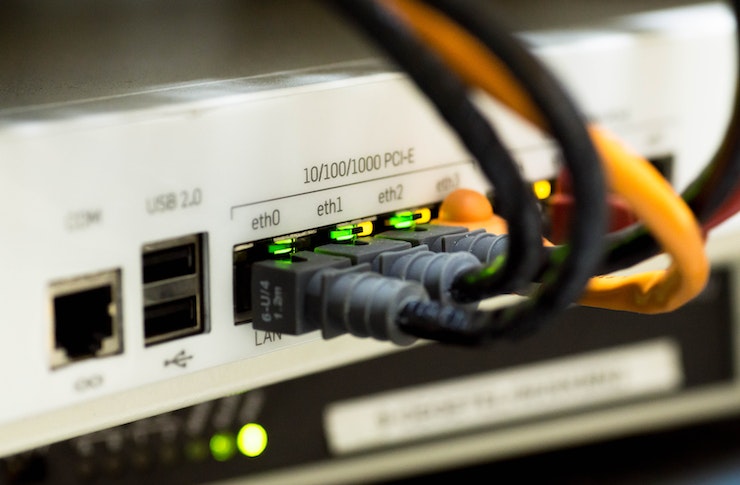IPv6 Adoption: Challenges and Opportunities in the Modern Internet
The internet's addressing system is undergoing a monumental shift, yet many remain unaware of its significance. As we rapidly deplete the available IPv4 addresses, the transition to IPv6 becomes increasingly crucial. This evolution in internet protocol promises to reshape our digital landscape, but what exactly does it mean for businesses, consumers, and the future of online connectivity?

Regional Internet Registries (RIRs) have been forced to implement stringent allocation policies as they approach complete exhaustion of their IPv4 address pools. This scarcity has given rise to a secondary market for IPv4 addresses, with prices soaring as demand outstrips supply. The situation poses significant challenges for network expansion and the deployment of new services.
IPv6: A Solution with Vast Potential
Enter IPv6, the next-generation Internet Protocol designed to address the limitations of its predecessor. With a 128-bit address space, IPv6 offers an astronomical number of unique addresses—340 undecillion, to be precise. This vast pool of addresses not only solves the immediate scarcity issue but also paves the way for unprecedented growth in internet-connected devices and services.
Beyond its expanded address space, IPv6 brings several improvements to the table. These include enhanced security features, more efficient routing, and better support for quality of service (QoS) prioritization. The protocol’s design also facilitates easier network configuration and management, potentially reducing operational costs for service providers and enterprises alike.
The Slow March of IPv6 Adoption
Despite its clear advantages, the global adoption of IPv6 has been surprisingly slow. As of 2023, global IPv6 adoption hovers around 35%, with significant variations across different regions and countries. This gradual uptake can be attributed to several factors, including the costs associated with upgrading network infrastructure, the complexity of managing dual-stack environments, and a lack of immediate perceived benefits for many organizations.
Large content providers and telecom operators have been at the forefront of IPv6 deployment, driven by the need to support growing user bases and new services. However, many small and medium-sized businesses have been hesitant to make the transition, often relying on Network Address Translation (NAT) to stretch their existing IPv4 allocations.
Technical Hurdles in the Transition
The transition from IPv4 to IPv6 is not without its technical challenges. One of the primary obstacles is the lack of direct compatibility between the two protocols. This necessitates the use of transition mechanisms such as dual-stack implementations, tunneling, and translation technologies.
Dual-stack deployments, where devices and networks support both IPv4 and IPv6 simultaneously, have been a popular approach. However, this method increases complexity and can lead to performance overhead. Tunneling techniques, which encapsulate IPv6 traffic within IPv4 packets, provide a stopgap solution but may introduce latency and security concerns.
Network Address Translation-Protocol Translation (NAT-PT) and other translation mechanisms aim to bridge the gap between IPv4 and IPv6 networks. While these technologies enable communication between the two protocol versions, they can introduce bottlenecks and break end-to-end connectivity principles.
Economic Implications of IPv6 Adoption
The economic aspects of IPv6 adoption are multifaceted. On one hand, the transition requires significant investment in hardware upgrades, software updates, and staff training. Many organizations struggle to justify these costs, especially when the immediate benefits may not be readily apparent.
On the other hand, the long-term economic advantages of IPv6 are substantial. The elimination of NAT requirements can simplify network architectures, potentially reducing operational expenses. The vast address space enables new business models and services, particularly in the realm of smart devices and the industrial internet.
Moreover, as IPv4 addresses become increasingly scarce and expensive, the cost-benefit analysis begins to shift in favor of IPv6 adoption. Organizations that delay the transition may find themselves at a competitive disadvantage, unable to scale their networks efficiently or take advantage of emerging technologies that rely on abundant addressing resources.
The Role of Government and Regulatory Bodies
Recognizing the importance of IPv6 adoption, many governments and regulatory bodies have taken steps to encourage the transition. In the United States, for example, the Office of Management and Budget has mandated that all federal agencies upgrade their public-facing systems to support IPv6.
Similarly, the European Union has set targets for IPv6 deployment across member states. These initiatives often include funding for research and development, as well as guidelines for public procurement that prioritize IPv6-compatible equipment and services.
Regulatory approaches vary globally, with some countries taking a more hands-off approach while others implement strict timelines for IPv6 adoption. The effectiveness of these strategies remains a topic of debate within the telecommunications community.
Looking Ahead: The Future of Internet Addressing
As we move further into the 21st century, the full realization of IPv6’s potential becomes increasingly critical. The protocol’s vast address space is not just about accommodating more devices; it’s about enabling new paradigms in network architecture and service delivery.
The transition to IPv6 is likely to accelerate as the Internet of Things (IoT) ecosystem expands, demanding unique addresses for billions of sensors and smart devices. Additionally, emerging technologies such as augmented reality and autonomous vehicles will rely on the enhanced capabilities of IPv6 for optimal performance.
While the road to full IPv6 adoption may be longer than initially anticipated, the direction is clear. Organizations that proactively embrace this transition will be better positioned to innovate and thrive in the evolving digital landscape. As the internet continues to grow and evolve, IPv6 will play a crucial role in shaping its future, ensuring that the next generation of online experiences is built on a foundation capable of supporting unprecedented connectivity and creativity.




